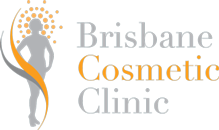Nipple Surgery Before and After Gallery
The results shown are specific to the individual patient and may not reflect the outcomes others will experience, as individual factors such as genetics, healing, and lifestyle can impact results. Images were taken immediately before surgery and three months post-surgery; all surgical procedures carry risks and should be
considered carefully. Before proceeding, you should seek a second opinion from an appropriately qualified health practitioner.
Inverted Nipple Case Study Patient A
Inverted Nipple Case Study Patient B
Nipple Reduction Case Study Patient A
Nipple Reduction Case Study Patient B
Nipple Reduction Case Study Patient C
Nipple and areola surgery can be performed on its own or alongside other procedures such as breast augmentation, lift, or reduction. It may be considered by patients who are dissatisfied with the shape or size of their nipples, have nipple inversion, or require reconstructive surgery after trauma or cancer treatment.
At Brisbane Cosmetic Clinic, procedures are tailored to each patient’s individual needs with the aim of achieving balanced, natural results.
As with all surgical procedures, outcomes vary from person to person, and there are risks that need to be carefully considered. For further details, please visit our dedicated Nipple Surgery Page or arrange a consultation with Dr Georgina Konrat.
We extend our gratitude to the patients who have kindly allowed their before and after images to be included in this gallery.
Please note: this gallery contains medical images of nipple and areola surgery before and after procedures. These photographs are provided for educational purposes only and are intended to illustrate some of the possible outcomes.

